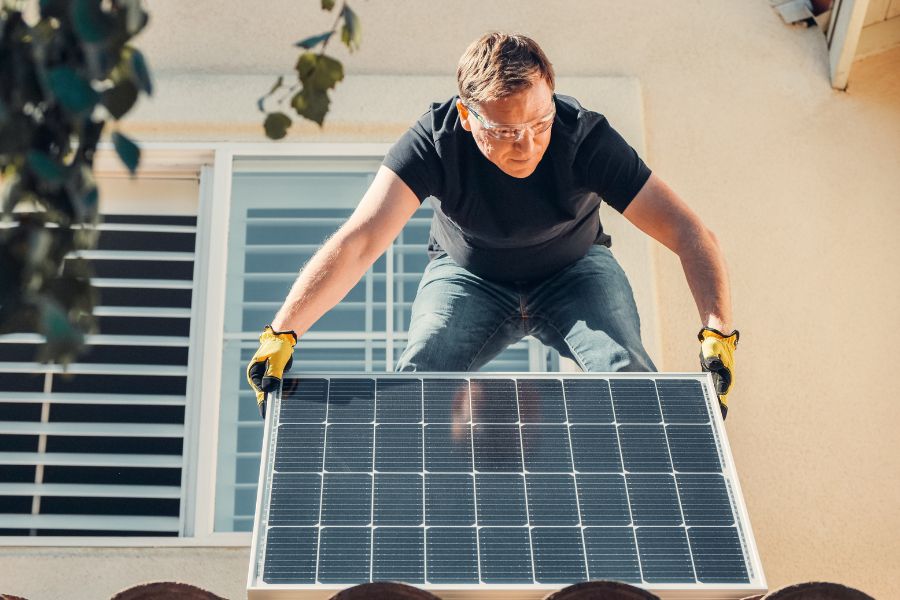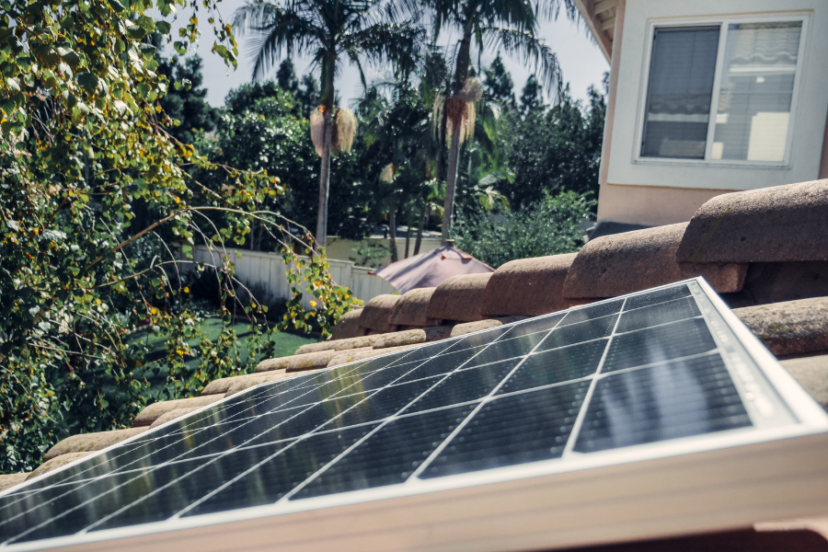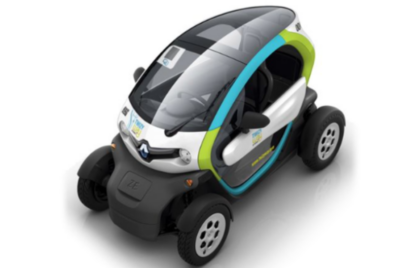Solar Panels – Harnessing the Sun
A Renewable Energy Source for the Future
Solar photovoltaic (PV) panels are devices that convert sunlight into electricity. They are a clean and renewable source of energy, and they are becoming increasingly popular as a way to reduce our reliance on fossil fuels.
With the solar photovoltaic glass market projected to reach more than USD 21 billion within the next five years, its potential is undeniable.
How Solar Panels Work
Solar Photovoltaic Panels work by utilizing photons from sunlight to liberate electrons within a semiconductor material. As the electrons flow through an electrical circuit, an electric current is generated. The amount of electricity produced depends on sunlight exposure, panel efficiency, and size.
Types of Solar Photovoltaic Panels
PV panels are available in a variety of sizes and efficiency ratings. The most common type of Panels is made of silicon, but other materials, such as cadmium telluride and copper indium gallium selenide, are also used.
Applications of Solar PV Panels
Solar energy can be used to power homes, businesses, and even entire communities. They can also be used to generate electricity for off-grid applications, such as in remote areas or on boats.
The Growing Efficiency of Solar Photovoltaic Panels
Declining costs have made PV panels cost-effective for electricity generation. Moreover, government incentives and rebates make them even more accessible. With advancing technology, PV panels are set to play a vital role in meeting future energy demands.
Benefits of Using Solar Photovoltaic Panels
Solar panels offer a plethora of benefits, making them a compelling choice for individuals and businesses seeking a sustainable energy solution. Let’s delve deeper into each advantage:
1. Clean and Renewable Energy Source:
Solar PV panels harness the power of sunlight to generate electricity, producing clean energy without harmful emissions or pollutants. Unlike fossil fuels, which contribute to air pollution and climate change, solar energy is environmentally friendly, reducing the carbon footprint and mitigating the adverse effects on the planet. By opting for solar energy, users actively contribute to a greener and more sustainable future.
2. Reducing Dependence on Fossil Fuels:
One of the most significant advantages of solar photovoltaic panels is their role in reducing dependence on finite and depleting fossil fuels. As the world grapples with the challenges of dwindling fossil fuel reserves and rising energy demands, solar energy provides a viable alternative. By embracing solar power, individuals and communities become less reliant on non-renewable resources, contributing to energy security and long-term sustainability.
3. Cost Savings on Energy Bills:
Solar photovoltaic panels enable users to generate their electricity, thereby offsetting or even eliminating the need to rely solely on electricity from the grid. As a result, energy bills can significantly decrease over time, providing substantial cost savings. While the initial investment in solar panel installation may seem significant, the long-term financial benefits outweigh the costs, offering a remarkable return on investment.
4. Increased Property Value:
Incorporating solar energy solutions into residential or commercial properties enhances their market appeal and value. Properties equipped with solar energy systems are often seen as more desirable by prospective buyers due to the potential for reduced energy expenses and environmental benefits. Solar panels add an attractive and eco-conscious feature, giving properties a competitive edge in the real estate market.
5. A Wise Investment for the Future:
Investing in solar photovoltaic panels is a strategic move with long-term benefits. As the demand for renewable energy rises and technology advances, solar panels become more efficient and affordable. Locking in fixed energy costs through solar power insulates users from the volatility of traditional energy prices. Additionally, with government incentives and tax credits, the financial feasibility of solar energy systems becomes even more compelling.

Installation of Solar Photovoltaic Panels
If you are contemplating installing solar photovoltaic panels, it is essential to consider several key factors to make an informed decision:
1. Size and Efficiency of the Panels:
The size and efficiency of solar PV panels directly impact the amount of electricity they can generate. Larger panels with higher efficiency can convert more sunlight into electricity, leading to increased energy production. Assess your energy needs and available roof space to determine the ideal panel size and efficiency required for your specific requirements.
2. Cost and Types of Panels:
Solar PV panel costs can vary based on their size, efficiency, and type. Traditional monocrystalline silicon panels are popular and offer good efficiency, but they might be more expensive than other options. Polycrystalline panels are cost-effective but may have slightly lower efficiency. Thin-film panels are budget-friendly but might require more space. Consider your budget and energy goals to choose the best panel type that suits your needs.
3. Government Incentives and Rebates:
Many governments and local authorities provide incentives and rebates to encourage the adoption of renewable energy sources like solar panels. These incentives can significantly reduce the upfront costs of installation. Research the available incentives, tax credits, and rebates in your region to make the most of the financial benefits.
4. Qualified Installer:
Proper installation is crucial for the optimal performance and safety of solar panels. Hiring a qualified and experienced installer is essential to ensure that the panels are correctly positioned, connected, and secured. A reputable installer will assess your property, recommend the right system, and handle the paperwork for permits and interconnection with the grid.
5. Roof Orientation and Shading:
The orientation of your roof and any potential shading from nearby trees or buildings can affect the efficiency of the panels. They should ideally be installed on a roof that receives ample sunlight throughout the day without obstruction. Conduct a solar site analysis to assess shading patterns and determine the best placement for maximum energy production.
6. Maintenance and Warranty:
Solar Systems are generally low-maintenance, but occasional cleaning and inspections are necessary to ensure peak performance. Inquire about the maintenance requirements and warranty offered by the panel manufacturer and installer. A reliable warranty ensures peace of mind and protection against unexpected issues.
By carefully considering these factors, you can make a well-informed decision about installing solar photovoltaic panels that align with your energy needs, budget, and long-term sustainability goals.
Solar energy presents a compelling opportunity to harness the power of the sun and contribute to a cleaner and greener future.
Conclusion
Embracing solar photovoltaic panels not only contributes to a sustainable and eco-friendly future but also empowers individuals and businesses with greater control over their energy needs and costs. By taking advantage of clean, renewable energy, users align their values with environmental stewardship while making a sound investment for a brighter and more sustainable tomorrow.
FAQs
1. How do solar photovoltaic panels generate electricity?
Solar panels generate electricity through the photovoltaic effect. When sunlight strikes the panels, the photons in the sunlight knock electrons loose from atoms in the semiconductor material of the panel. This creates a flow of electricity as the free electrons move through an electrical circuit.
2. What are the different types of solar photovoltaic panels?
There are several types of solar photovoltaic panels, including:
• Monocrystalline panels: Made from single-crystal silicon, known for high efficiency.
• Polycrystalline panels: Made from multiple crystals, slightly less efficient but more cost-effective.
• Thin-film panels: Made from various materials and are flexible, suitable for certain applications.
3. Can solar PV panels be used to power an entire house?
Yes, solar PV panels can be used to power an entire house. The number of panels required depends on factors such as the energy needs of the house, the efficiency of the panels, and the amount of sunlight the location receives.
4. Are there government incentives available for installing solar panels?
Yes, many governments offer incentives and rebates to encourage the installation of solar energy systems. These incentives can vary by location and may include tax credits, grants, or feed-in tariffs, which allow you to sell excess electricity back to the grid.
5. How much do solar photovoltaic panels cost, and how long is the payback period?
The cost of solar photovoltaic panels can vary depending on the size, efficiency, and type of panel. On average, a residential solar PV system can cost several thousand to tens of thousands of dollars. The payback period, which is the time it takes for the system to pay for itself through energy savings, typically ranges from 5 to 10 years. However, this can vary based on factors like energy usage and available incentives.





Comments are closed.